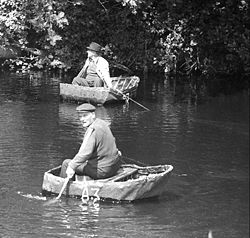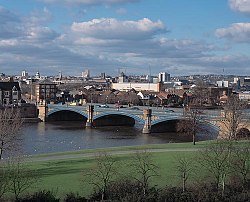





The Rivers Trust (RT) is an environmental charity No. 1107144, [1] and an umbrella organisation for 60 member trusts concerned with rivers in England, Wales, Northern Ireland and Ireland. The Trust's headquarters are in Callington, Cornwall. The Rivers Trust along with its members work to protect, promote and enhance freshwater ecosystems for both people and wildlife.
Contents
The Rivers Trust was founded in 2001 as the Association of Rivers Trusts. [2] Its founding associations were four River Trusts: the Eden Rivers Trust, Tweed Foundation, Westcountry Rivers Trust, and the Wye and Usk Foundation. The association was granted registered charity status in 2004. Its Scottish equivalent is the Rivers and Fisheries Trusts of Scotland (RAFTS). Its Welsh equivalent is Afonydd Cymru: The Rivers Trust of Wales. (AC)
The association changed its name in August 2011 to The Rivers Trust. [2]
The Rivers Trust are members of Blueprint for Water , Wildlife and Countryside Link and are administrators of the Catchment Based Approach .